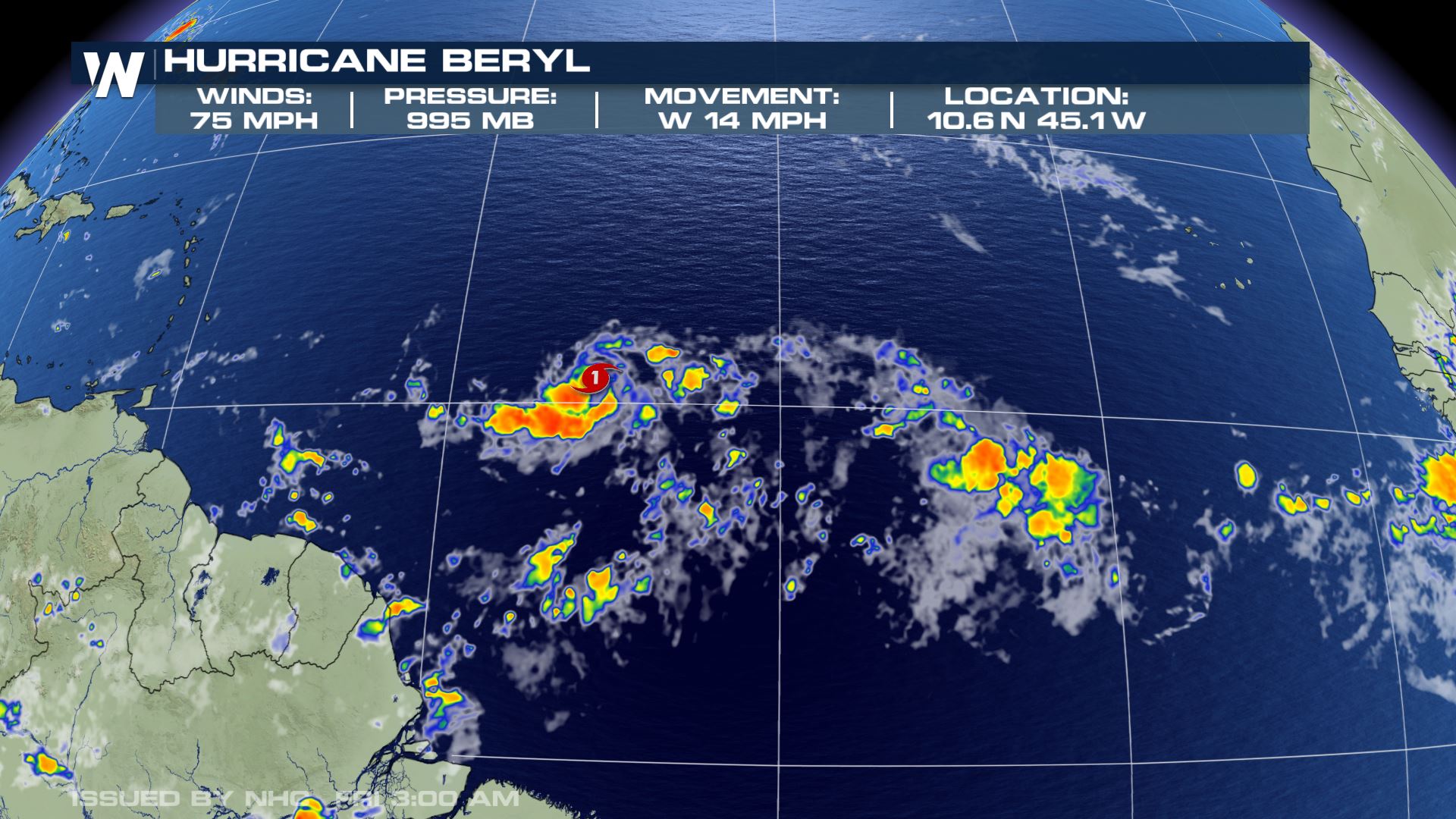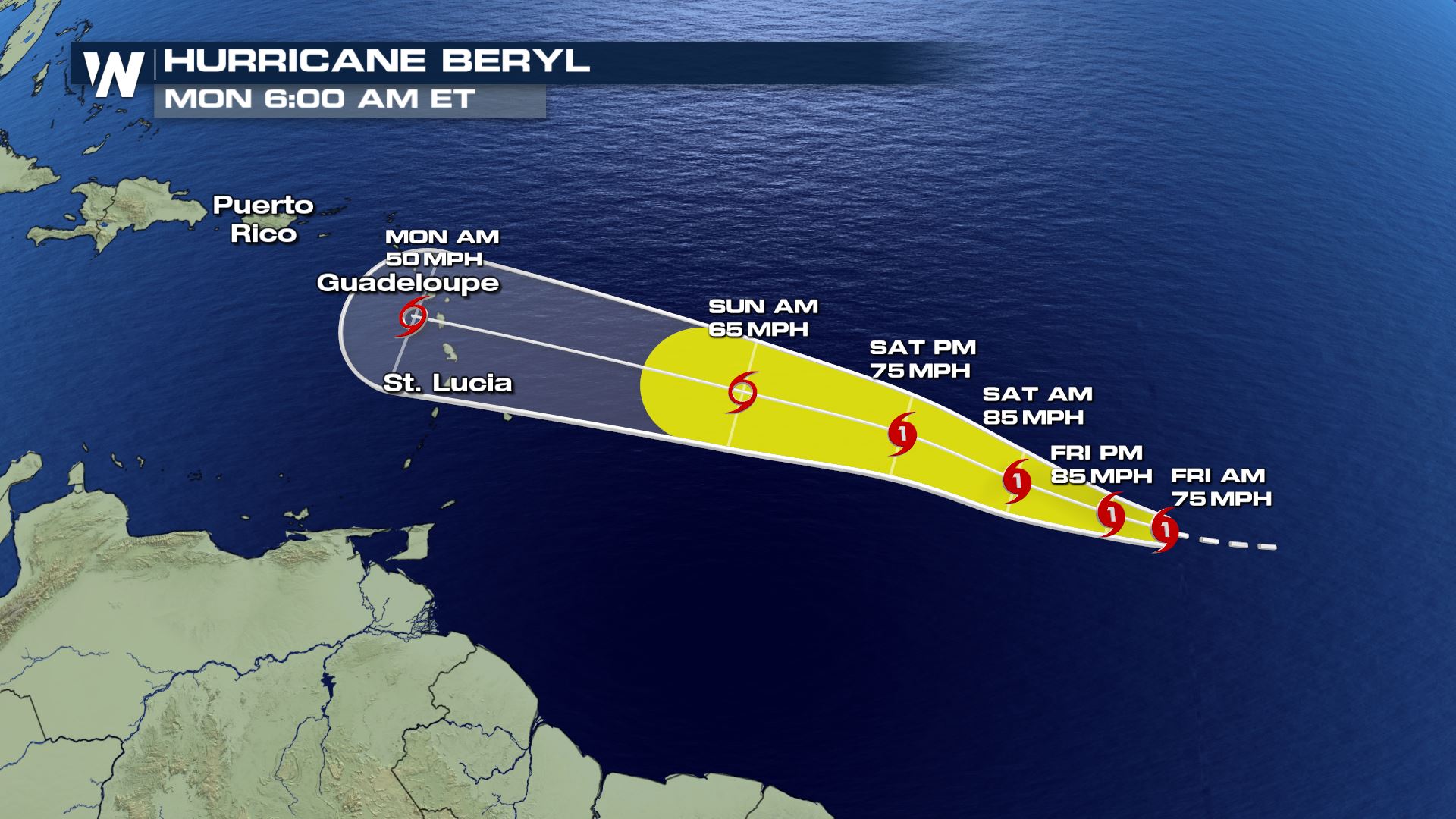Forecast Details

Hurricane beryl forecast – Hurricane Beryl is currently a Category 4 hurricane with maximum sustained winds of 130 mph. The hurricane is moving west-northwest at 12 mph and is expected to continue on this track for the next 24 hours. Beryl is expected to weaken to a Category 3 hurricane by Wednesday morning and a Category 2 hurricane by Thursday morning.
The hurricane is expected to make landfall on the coast of Florida on Thursday afternoon. The exact landfall location is still uncertain, but the hurricane is expected to bring heavy rain, strong winds, and storm surge to the area.
Projected Path and Speed
Hurricane Beryl is expected to continue on a west-northwest track for the next 24 hours. The hurricane is then expected to turn to the northwest and make landfall on the coast of Florida on Thursday afternoon.
Hurricane Beryl is forecast to bring heavy rain and wind to the coast. For more information on the storm’s path, visit storm beryl path. Stay tuned for updates on Hurricane Beryl’s forecast.
Expected Intensity
Hurricane Beryl is expected to weaken to a Category 3 hurricane by Wednesday morning and a Category 2 hurricane by Thursday morning. The hurricane is still expected to bring heavy rain, strong winds, and storm surge to the area when it makes landfall.
Hurricane Beryl expected to intensify as it approaches Barbados. Read more about the barbados hurricane beryl and its potential impact on the island. Stay informed about the hurricane beryl forecast as it develops.
Projected Landfall Location and Time
The exact landfall location of Hurricane Beryl is still uncertain, but the hurricane is expected to make landfall on the coast of Florida on Thursday afternoon.
Impact Analysis: Hurricane Beryl Forecast

Hurricane Beryl poses significant risks to coastal areas, including extensive flooding, erosion, and damage to infrastructure. The powerful storm can cause severe damage to buildings, roads, and bridges, disrupting transportation and communication networks.
The storm’s strong winds and heavy rainfall can lead to widespread flooding, submerging low-lying areas and causing significant damage to property. Coastal erosion can also occur, threatening coastal communities and infrastructure.
Risks to Human Life and Property
Hurricane Beryl poses serious risks to human life and property in affected regions. The storm’s powerful winds can cause flying debris, which can injure or kill individuals. Flooding can also lead to drowning and property damage. Additionally, power outages and disruptions to water and communication systems can create challenges for residents.
Recommendations for Evacuation and Safety Precautions
In areas at risk from Hurricane Beryl, it is crucial to follow evacuation orders and take necessary safety precautions. Residents should evacuate to higher ground and avoid low-lying areas. They should also secure loose objects, such as outdoor furniture, and bring in any items that could be damaged by wind or water.
During the storm, it is essential to stay indoors and away from windows. Residents should listen to local news and weather updates for the latest information and instructions. If power outages occur, use flashlights or battery-powered lanterns for lighting and avoid using candles due to fire risk.
Historical Context

Hurricanes are a common occurrence in the Atlantic Ocean, and many have impacted the same or similar areas as Hurricane Beryl. Some of the most notable hurricanes to hit this region include:
- Hurricane Katrina (2005): This Category 5 hurricane caused catastrophic damage to New Orleans and the surrounding area, killing over 1,800 people.
- Hurricane Rita (2005): This Category 5 hurricane made landfall in Texas, causing widespread flooding and damage.
- Hurricane Ike (2008): This Category 4 hurricane made landfall in Texas, causing widespread power outages and flooding.
- Hurricane Harvey (2017): This Category 4 hurricane caused catastrophic flooding in Texas, killing over 100 people.
Hurricane Beryl is forecast to be a Category 1 hurricane, which is less intense than the hurricanes listed above. However, it is still important to be prepared for the potential impacts of this storm.
Effectiveness of Previous Hurricane Preparedness and Response Efforts, Hurricane beryl forecast
The effectiveness of hurricane preparedness and response efforts has varied over time. In recent years, there have been significant improvements in hurricane forecasting and warning systems, which has helped to reduce the number of deaths and injuries caused by these storms.
However, there is still room for improvement. One of the biggest challenges is getting people to evacuate when a hurricane is approaching. Many people are reluctant to leave their homes, even when they are in danger. This can lead to tragic consequences.
Another challenge is coordinating the response to a hurricane. After a hurricane makes landfall, there is often a need for a massive relief effort. This can be difficult to coordinate, especially in areas that have been severely damaged.
Despite these challenges, there have been some notable successes in hurricane preparedness and response. For example, the evacuation of New Orleans before Hurricane Katrina saved many lives. And the response to Hurricane Harvey was widely praised for its effectiveness.
By learning from the past, we can continue to improve our hurricane preparedness and response efforts. This will help to save lives and reduce the damage caused by these storms.